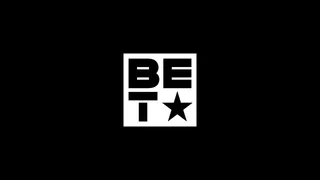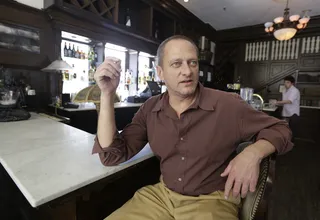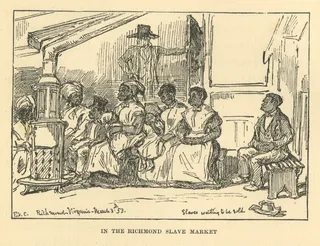Ballpark May Be Built on 'Sacred' Slave-Trade Grounds in Virginia
A look at what supporters and opponents are saying.

1 / 8
Proposed Ballpark Sparks Controversy in Richmond, Virginia - Controversy surrounds the building of a proposed ballpark over land where African-Americans were once sold as slaves in Richmond, Virginia. Here is a look at the facts surrounding the issue. — Natelege Whaley (@Natelege) In this photo a historical marker marks the sacred Old Negro Burial Ground. (Photo: AP Photo/Steve Helber)

2 / 8
Shockoe Bottom: Slave Trade Center of Richmond - Shockhoe Bottom is Richmond's oldest neighborhood where 300,000 were jailed, bought or sold, and shipped to the South. This photo shows a historical marker that lies before a walkway at the Slave Burial Ground. (Photo: AP Photo/Steve Helber)

3 / 8
Supporters of Ballpark Promise to Pay Homage to Slaves - David Napier is president of the Shockoe Bottom Neighborhood Association in Richmond. The association supports the $200 million economic development. Those for the stadium believe the neighborhood can be revived with the new establishment and at the same time pay homage to the history of the area. (Photo: AP Photo/Steve Helber)
Photo By Photo: AP Photo/Steve Helber

4 / 8
Ana Edwards Advocates for Sacred Ground - "We are just now beginning to be able to study what's here," said Ana Edwards. She is the chief opponent against the ballpark development. Edwards serves as chair of the Sacred Ground Historical Reclamation Project. (Photo: AP Photo/Steve Helber)

5 / 8
Lumpkin's Slave Jail Was "The Devil's Half-Acre" - Edwards speaks about Lumpkin's Jail at the historical site. Nicknamed "The Devil's Half-Acre" for the cruelty of its owner, it was one of the largest slave-holding businesses during the trading area. Slaves were transported here via the James River. (Photo: AP Photo/Steve Helber)
ADVERTISEMENT

6 / 8
Richmond Had Second-Largest Slave Trade Center in the U.S. - The Library of Virginia provided this drawing by Eyre Crowe that depicts the Richmond slave market in 1853. Richmond was the second largest slave-trading center in America in the years leading up to the Civil War. (Photo: AP Photo/Library of Virginia)
Photo By Photo: AP Photo/Library of Virginia

7 / 8
"A Number of Valuable Slaves" - An announcement for an auction of "a number of valuable slaves" on Feb. 17, 1812 is shown here. The flier advertises: "an excellent Carpenter, a brick Moulder, a tanner, a good crop hand, 2 women, and 5 children." (Photo: AP Photo/Library of Virginia)
